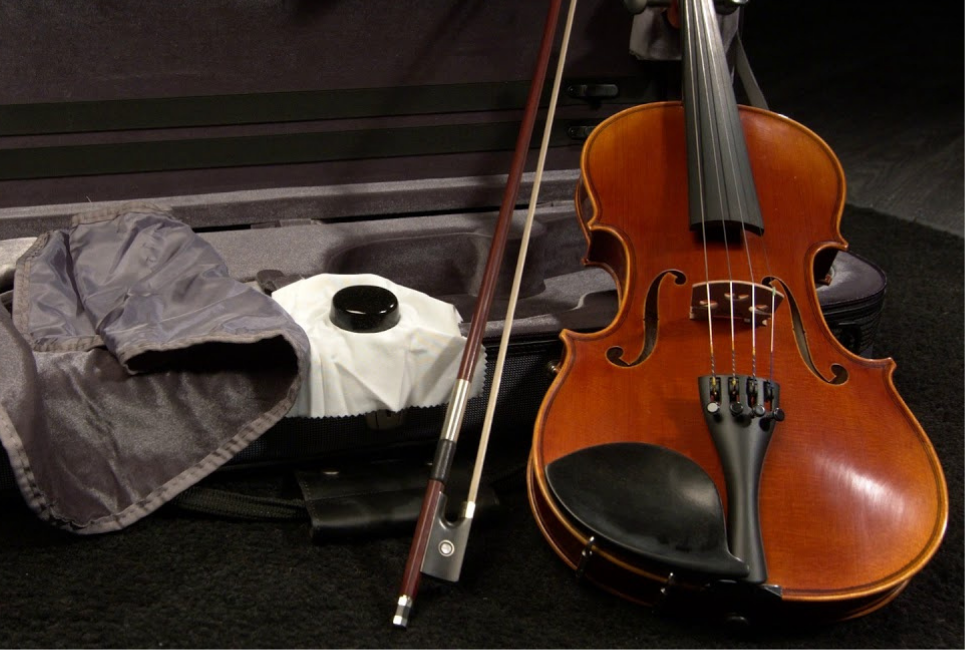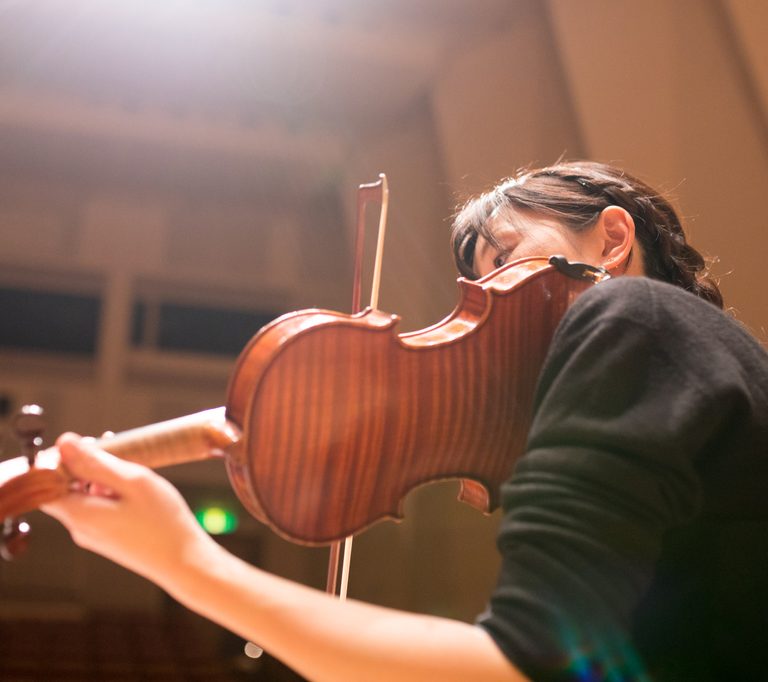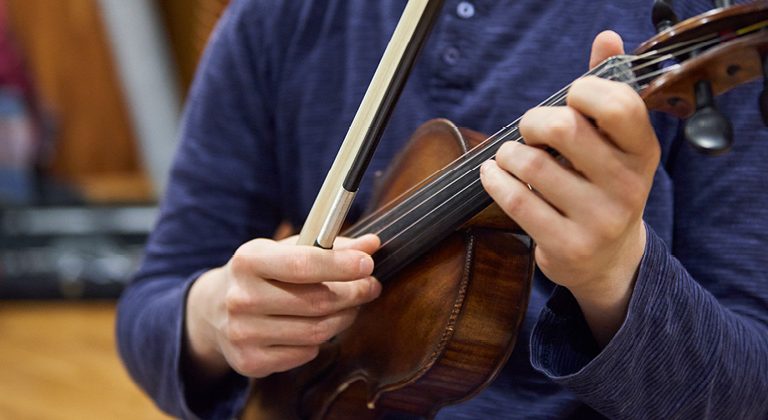The best violin for a Beginner would be the Mendini MV500+92D. There are various factors to consider when finding the best violin for a beginner.
The Mendini MV500+92D is a highly recommended choice for beginners as it offers good quality and sound at an affordable price. Its high ratings and positive reviews make it a reliable option. Additionally, its included accessories and setup make it convenient for beginners to start playing right away.
With its excellent value and playability, the Mendini MV500+92D is an ideal choice for those just starting their violin journey. Its durability and performance make it a popular pick for beginners looking for a reliable instrument to learn and grow with.
Understanding The Different Types Of Violins
Acoustic Vs. Electric
When it comes to choosing the best violin for a beginner, understanding the difference between acoustic and electric violins is crucial. Acoustic violins produce sound through the natural vibration of their wooden bodies, creating a classic, warm tone. On the other hand, electric violins use electronic pickups to amplify the sound, offering versatility and the ability to adjust the volume. Each type has its own unique characteristics, and the choice between acoustic and electric depends on the player’s preference and the style of music they intend to play.
Size Options For Beginners
When it comes to violin sizes, beginners have several options to consider, ranging from 1/16 to 4/4. Each size is suitable for different age groups and arm lengths, ensuring that the player can comfortably hold and play the instrument. Understanding the pros and cons of each size is essential in helping beginners make the right choice.
- 1/16: Ideal for very young children, usually under the age of 5.
- 1/10 to 1/8: Suited for children aged 3 to 5.
- 1/4: Suitable for children aged 4 to 7.
- 1/2: Recommended for children aged 6 to 10.
- 3/4: A good fit for children aged 9 to 11.
- 4/4 (Full Size): Appropriate for ages 9 and older, including adults.
It’s important for beginners to select the correct size to ensure proper posture and technique while playing.
Essential Features To Look For In A Beginner Violin
When it comes to choosing the best violin for a beginner, there are essential features that one should look out for. These features play a crucial role in the quality, ease of learning, and overall experience of playing the violin. In this guide, we will discuss the key aspects to consider when selecting a beginner violin, focusing on the quality of materials, proper setup and maintenance, the importance of a good bow, and the significance of fine tuners.
Quality Of Materials
One of the first things to consider when purchasing a beginner violin is the quality of materials used in its construction. A well-crafted violin made from high-grade spruce and maple, with a solid wood top and back, will produce a better tone and resonance compared to those made from laminated or inferior quality woods. Look for a violin with a hand-carved solid wood body, as this contributes to the instrument’s durability and sound quality.
Proper Setup And Maintenance
Ensuring a beginner violin is properly set up and maintained is essential for optimal playability and longevity. The alignment of the bridge, correct string height, and smooth fingerboard are key components in facilitating ease of play for beginners. Additionally, regular maintenance such as proper cleaning, rosin application, and periodic adjustments by a qualified luthier contribute to the violin’s overall performance.
Importance Of A Good Bow
A good-quality bow is as important as the violin itself. Look for a bow made from quality horsehair and a well-balanced, straight stick to ensure smooth and controlled bowing techniques. The ergonomic design and a comfortable grip on the bow are also essential for beginners to develop proper bowing techniques effectively.
Importance Of Fine Tuners
While more experienced players may prefer to use only the fine tuners, having built-in fine tuners on the tailpiece of a beginner violin can be beneficial. The ease of tuning provided by fine tuners helps beginners maintain accurate pitch, especially during initial learning stages, reducing the frustration often associated with tuning inaccuracies.
Best Violin Brands For Beginners
When it comes to selecting the best violin for a beginner, choosing a reputable and reliable brand is essential. The right violin can greatly impact a beginner’s learning experience and progression. The market offers a variety of violin brands for beginners, each with its own distinct characteristics and qualities. In this article, we’ll discuss the best violin brands for beginners, compare top brands, explore budget-friendly options, and analyze the durability and longevity of materials used.
Comparison Of Top Brands
When considering the best violin brands for beginners, it’s imperative to compare the offerings of renowned manufacturers. These comparisons help aspiring violinists make informed decisions and choose a brand that aligns with their requirements. Here is a succinct comparison of three top violin brands for beginners:
| Brand | Key Features |
|---|---|
| Brand A | An affordable option with quality craftsmanship and reliable customer support. |
| Brand B | Offers a wide range of beginner-friendly violins with excellent sound quality and durability. |
| Brand C | Known for producing budget-friendly violins without compromising on playability and tone. |
Budget-friendly Options
For beginners, finding a budget-friendly violin that doesn’t compromise on quality is paramount. Several brands cater to this need by offering affordable yet reliable options. These violins are crafted with precision and attention to detail, making them ideal for beginners who are mindful of their budget. Budget-friendly options from established brands ensure that aspiring violinists can access instruments that facilitate their learning without breaking the bank.
Durability And Longevity Of Materials
When investing in a beginner violin, it’s important to consider the durability and longevity of the materials used in its construction. Opting for a violin made from sturdy, long-lasting materials is key to ensuring that beginners have an instrument that can withstand regular handling and practice. Reliable brands prioritize the use of high-quality woods and fittings, contributing to the longevity and resilience of their violins. This ensures that beginners can confidently progress in their musical journey without concerns about the structural integrity of their violin.
Top Considerations When Choosing A Beginner Violin
When choosing a beginner violin, there are several important factors to consider to ensure that the instrument is suitable for a novice player. From sound quality and tonewood to ergonomic design considerations, each element plays a crucial role in creating a positive learning experience for the student. In this guide, we will explore the top considerations when selecting a beginner violin, covering the key aspects that can significantly impact the player’s progress and enjoyment.
Sound Quality And Tonewood
Sound quality is a critical factor when choosing a beginner violin. A good quality sound not only enhances the learning experience but also motivates the player. Tonewood also plays a significant role in determining the violin’s sound quality. Common tonewoods include spruce, maple, and ebony. Ensuring that the violin is made from high-quality tonewood will contribute to a better sound and overall playing experience.
Comfort And Playability
Comfort and playability are paramount for a beginner violinist. The instrument should be comfortable to hold and play for extended periods. Consider the weight, balance, and overall feel of the violin to ensure it is well-suited for a beginner’s hands and posture. Additionally, the neck and fingerboard should be smooth and easy to navigate for effortless playing.
Ergonomic Design Considerations
When selecting a beginner violin, it is essential to consider ergonomic design. Look for features such as a chin rest, shoulder rest, and well-placed strings to optimize comfort and minimize strain on the player’s body. An ergonomic design can significantly impact the student’s long-term playing experience.
Accessory Inclusions And Additional Costs
Check for accessory inclusions such as a bow, rosin, and case when purchasing a beginner violin. Assess any additional costs that may arise, such as the need to upgrade the bow or purchase extra strings. Understanding the accessory inclusions and potential costs beforehand will ensure that the overall investment aligns with your budget and needs.
Researching And Testing Beginner Violins
Researching and testing beginner violins is crucial in finding the best instrument to kickstart your musical journey. As a beginner, it’s essential to lay a strong foundation with the right violin that suits your skill level and preferences.
Seeking Expert Advice And Recommendations
One of the most effective ways to ensure you are investing in the best beginner violin is by seeking expert advice and recommendations. Consulting with experienced violin teachers and professional musicians can provide valuable insights into the most suitable violin models for beginners. They can recommend reputable brands and provide guidance on factors such as size, tonal quality, and playability.
Understanding Reviews And Customer Feedback
When researching beginner violins, understanding reviews and customer feedback is invaluable. Online platforms and forums offer a wealth of user-generated content that can shed light on the real-life experiences of beginner violinists with specific instrument models. Carefully analyzing the pros and cons highlighted in these reviews can aid in making an informed purchase decision.
Importance Of Trying Before Buying
Trying out potential beginner violins before making a purchase is essential. Establishing a hands-on experience allows you to gauge the comfort, sound quality, and overall playability of the instrument. Many reputable music stores provide the opportunity for prospective buyers to test out different violin models, enabling them to make a well-informed decision based on their personal preferences and playing style.
Budgeting And Cost Analysis For Beginner Violins
When choosing a violin as a beginner, budgeting and cost analysis are crucial factors to consider. Understanding your financial parameters and making an informed decision will set the tone for your musical journey. This section will explore finding quality within a budget, long-term investment versus starter violins, and hidden costs and long-term considerations.
Finding Quality Within A Budget
Even on a tight budget, it’s possible to find a quality beginner violin. Researching reputable brands and seeking guidance from experienced players or instructors can help identify affordable options without sacrificing sound quality and playability. Prioritizing essential features such as solid wood construction and reliable tuning mechanisms can ensure a budget-friendly violin still delivers a satisfying playing experience.
Long-term Investment Vs. Starter Violins
Making a choice between a long-term investment and a starter violin depends on your commitment level. While a starter violin may suffice for initial learning stages, investing in a higher-quality instrument from the outset can offer longevity and enhanced performance capabilities. Consider the potential of outgrowing a beginner violin and the value of a durable instrument that can support your growth as a player.
Hidden Costs And Long-term Considerations
In addition to the initial purchase, beginner violinists should account for potential hidden costs and long-term considerations. These may include regular maintenance, string replacement, and potential upgrades as you progress. Factoring in these ongoing expenses at the outset can inform a more comprehensive budget and prevent unexpected financial strains as you advance in your musical journey.
Maintenance And Care For Beginner Violins

Creadit: https://stringsguide.com/
When beginning the journey of learning how to play the violin, it’s essential to understand the importance of maintenance and care for your instrument. Proper care and regular maintenance of your beginner violin are crucial for its longevity and optimal performance. Here’s a guide to help you ensure the longevity of your violin.
Importance Of Proper Storage And Travel Cases
Proper storage of your beginner violin is vital in maintaining its condition. Exposure to extreme temperatures, humidity, and direct sunlight can negatively impact the wood and strings, leading to tuning instability and potential damage. Choosing a suitable travel case is equally important for safeguarding your violin when on the go. Look for a case with a padded interior and a secure locking mechanism to protect your instrument from external damage and ensure its safety during transportation.
Cleaning And Maintenance Tips
- Use a soft, dry cloth to wipe down your violin after each practice session to remove any rosin residue and sweat, which can accumulate on the instrument.
- Inspect the bow regularly for hair condition and the presence of loose parts, and tighten or replace as necessary.
- Keep the violin strings clean and free from debris by gently wiping them with a clean, dry cloth after each use.
- Schedule regular inspections with a professional luthier to ensure your violin is properly set up and to address any potential issues before they escalate.
Knowing When To Upgrade
As you advance in your violin journey, you may reach a point where your beginner violin no longer meets your needs. Consider upgrading to a higher quality instrument when you notice limitations in its tone, playability, and overall performance. Upgrading to a more advanced violin can significantly enhance your playing experience and musical progression.
Finalizing Your Decision And Making The Purchase
When it comes to finalizing your decision and making the purchase of the best violin for a beginner, there are several key factors to consider. Setting realistic expectations, understanding the return policy and warranty, and knowing the resources for learning and getting started are essential steps in ensuring a successful purchase. Let’s delve into each of these aspects to help you make an informed decision.
Setting Realistic Expectations
When purchasing a violin as a beginner, it’s important to set realistic expectations. Understand that learning to play the violin takes time and dedication. While the quality of the instrument matters, beginners should focus more on finding a violin that is comfortable to play and produces a decent sound. Avoid getting swayed by expensive, professional-level violins. Instead, look for an instrument that meets your current skill level and budget.
Understanding The Return Policy And Warranty
Before making the final purchase, take the time to understand the return policy and warranty offered by the seller. Check for a flexible return policy in case the violin does not meet your expectations. Additionally, look for a warranty that covers any potential defects or damage, giving you peace of mind regarding the quality of your purchase.
Resources For Learning And Getting Started
As a beginner, it’s crucial to have access to resources that can support your learning journey. Look for packages that offer online tutorials, beginner-friendly sheet music, and access to a community of fellow learners. Consider finding a reputable violin teacher or joining a music school to get personalized guidance and support in your violin learning process.
Frequently Asked Questions For Best Violin For A Beginner
What Should I Consider When Buying A Beginner Violin?
When buying a beginner violin, consider factors such as size, quality, and budget. Look for a reputable brand with good customer reviews and consider renting before purchasing to ensure the instrument suits your needs.
How Do I Know Which Size Violin Is Right For Me?
Selecting the right size violin is crucial for comfort and proper playing technique. Measure the length between your neck and wrist or consult with a professional to determine the correct size based on your age and arm length.
Can I Learn To Play The Violin Without Prior Musical Experience?
Yes, with dedication and practice, anyone can learn to play the violin regardless of prior musical experience. Beginners often start with simple tunes and gradually progress to more complex pieces with the guidance of a skilled instructor.
What Is The Average Cost Of A Beginner Violin?
The cost of a beginner violin can vary depending on factors such as brand, quality, and accessories included. Generally, good quality beginner violins range from $200 to $600, and it’s advisable not to compromise on quality for a lower price.
Conclusion
Choosing the best violin for a beginner is crucial to kickstart a rewarding musical journey. By considering the factors discussed, such as budget, size, and sound quality, you can make an informed decision. Remember, finding the right violin that aligns with your goals and preferences is essential for a fulfilling musical experience.
To check our more blogs Click Here



